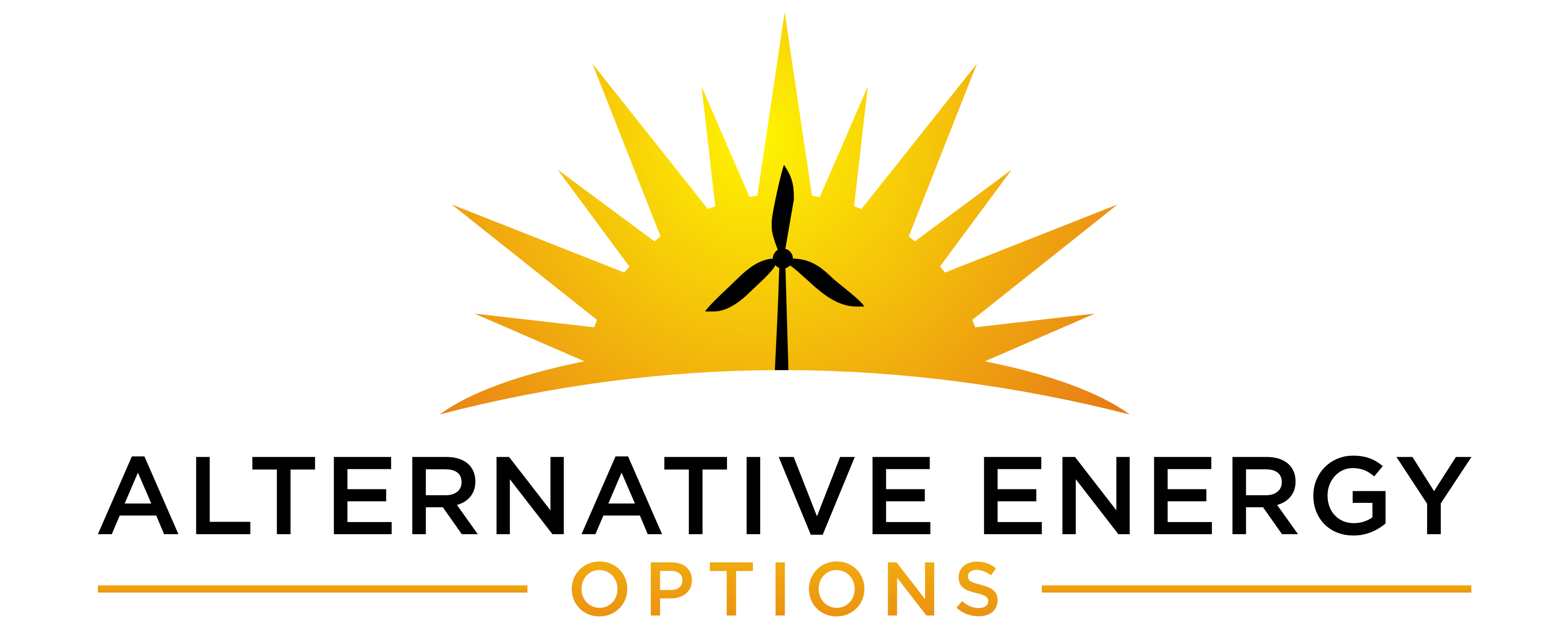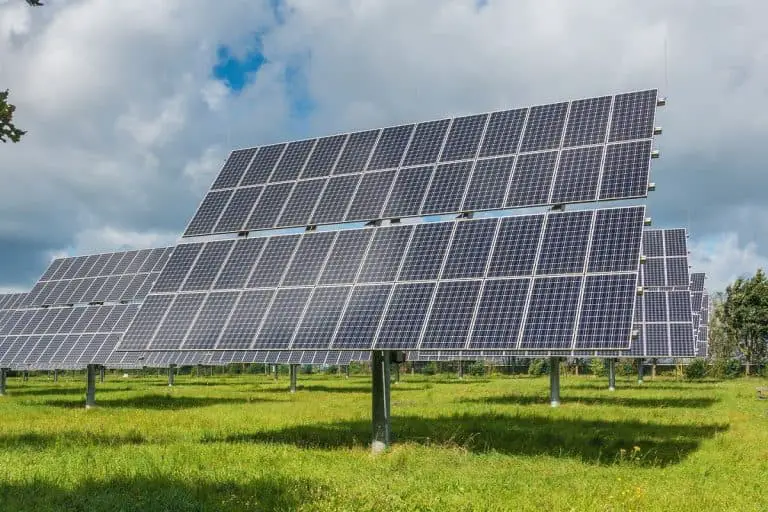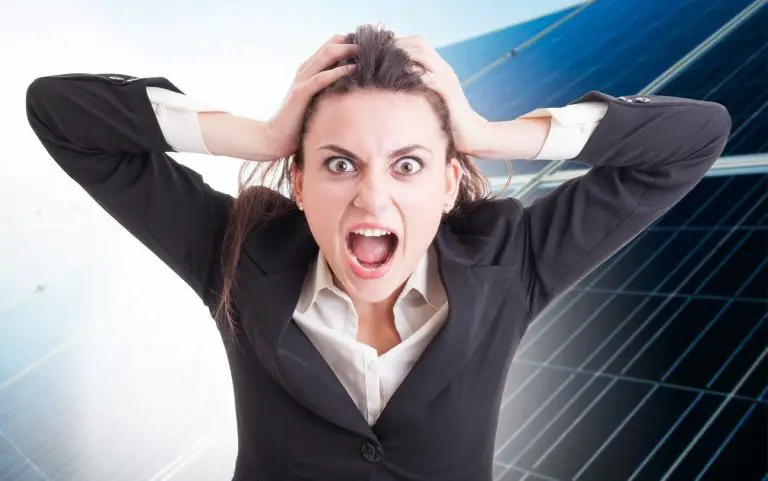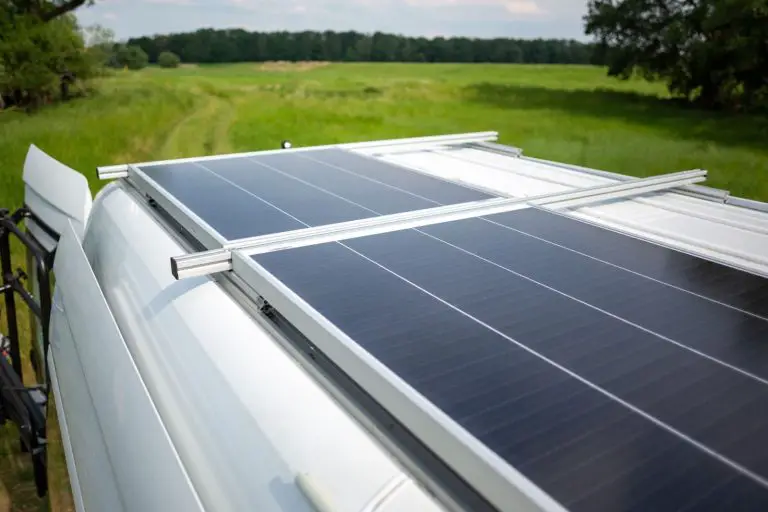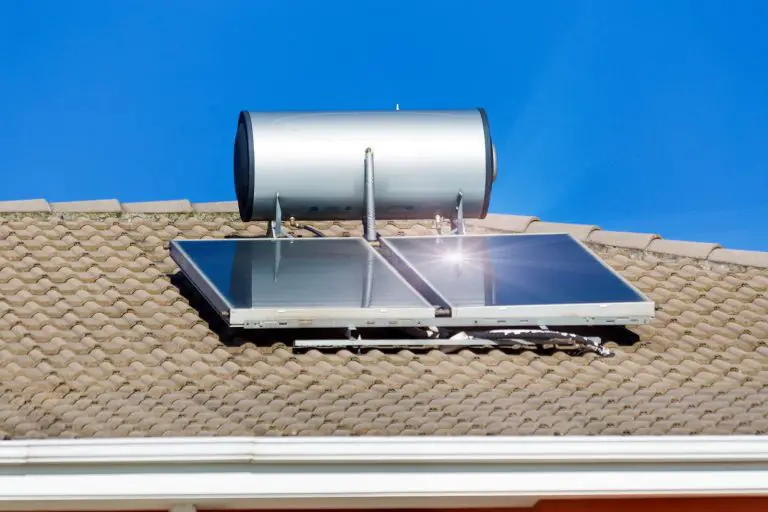Using Wind Turbines and Solar Together
It has become increasingly commonplace for homes and offices to use renewable energy resources as they are an easy and cost-effective way to reduce both electricity costs and carbon emissions. However, a common concern with sustainable energy resources, like wind and solar, is what happens when it isn’t sunny or the wind isn’t blowing?
To make the most of your renewable energy system, you can use wind turbines and solar energy together in a hybrid energy system. This type of system will produce more energy with greater consistency, although storing that power can be a challenge in modern configurations.
This article will take a closer look at the benefits of solar and wind energy as standalone renewable energy resources, why and how they can be combined in a hybrid energy system, and how to go about installing a system in your own home that harnesses the power of both the wind and the sun to generate electricity.
Why Use a Hybrid Power Plant?
A hybrid power plant refers to any energy system that combines two or more sources of electricity production.
The different ways of generating electricity all have different pros and cons, which means that the systems in a hybrid power plant generally complement one another as they mitigate one another’s weaknesses, as illustrated earlier in this article.
Solar and wind energy systems work so well in a hybrid power plant because both resources are highly predictable and usually follow recognizable patterns, making it simple enough to plan for times when output decreases from either the wind turbines or solar panels.
A hybrid solar and wind energy power plant can produce a consistent supply of electricity throughout the year. This is because as one system’s efficacy dwindles either daily or seasonally, the other will start to pick up the slack (source).
How Solar and Wind Energy Works
Solar and wind energy are both forms of renewable energy that can be used instead of the traditional power grid to power our homes and businesses.
The way solar power works is by converting sunlight into electricity using silicon photovoltaic (PV) cells. As soon as sunlight shines on these panels, the solar cells absorb the sun rays, and electricity is produced through the photovoltaic effect.
The electricity produced by solar panels is called direct current (DC) electricity and cannot be used by devices or appliances inside a home. That is why these systems use an inverter that converts the DC electricity to alternating current (AC) electricity, which can be used in the home.
Solar panels are usually positioned in such a way as to make the most use of the sunlight hours in a day, and that is why they are often placed on the roofs of buildings.
A wind turbine is a modern version of a windmill, and it uses the power generated by the blowing of wind to create electricity. As there is generally at least some type of wind blowing everywhere in the world, wind energy is a highly sought-after and effective way of generating electricity.
A large variety of wind turbine styles are being manufactured across the world, and they range from small to large with either vertical or horizontal axes. Most wind turbines have three blades that turn at a constant or variable velocity, depending on their technology.
The most recognizable and common wind turbines are of the very large variety used to create wind farms, and these can generate enough electricity to power a city. However, smaller wind turbines are available that are highly suitable for small-scale or individual use, such as providing power to a single home, boat, or RV.
The Advantages of Solar Energy
Solar energy has numerous benefits over traditional energy systems by negating the flaws that these types of systems hold. For example, should there be a blackout or a fault on the traditional power grid, a home will be without power, and there would be very little you could do about it.
By harnessing the sun’s power and storing this energy for later use, homes and offices can start to move away from the traditional power grid, becoming self-sustaining and greener in the process.
Raw and sustainable energy sources such as the sun can be considered to be entirely renewable and basically unlimited. The amount of solar energy that we have available on Earth is immense.
It is estimated that the sun produces approximately 10,000 times the amount of energy currently required by humans. If we were to correctly and efficiently capture just 0.02% of all available sunlight, it would be enough to replace every other fuel source that we currently use.
Additionally, solar energy doesn’t cause any pollution, and the pollution caused by the manufacturing of parts of the solar energy systems in use is negligible. It is also beneficial in the sense that it offers the opportunity for outlying or remote areas to have access to power where these areas cannot be connected to the traditional power grid.
The Advantages of Wind Energy
The benefits of wind energy extend far beyond just the obvious fact that it is renewable and constant. Wind, like solar, is consistently available and ready for harnessing. However, the benefits extend into the job sector, and wind farm construction accounts for significant job creation.
It is estimated that more than 120,000 workers in the US alone now have wind energy-related jobs (source). These career opportunities are spread over all 50 states, which means that even in states where no wind farms are currently in operation, there are still wind energy jobs being created.
According to the US Bureau of Labor Statistics, wind turbine technician and solar installer positions are in the top three fastest-growing occupations (source). This also means that wind and solar energy are responsible for a substantial percentage of working-class income.
In addition to this, wind energy is one of the cleanest power systems. It has some of the lowest environmental impacts and reduces carbon emissions, cuts pollution in the air that causes smog and respiratory problems such as asthma, and saves billions of gallons of water per annum.
The wind farms also protect the land they’re built on by leaving it undisturbed.
Some Cons to Wind and Solar
However, there are also problems with solar and wind, just as there are with other ways and means of generating electricity. Although sunshine and wind by themselves don’t cost a thing, the process of turning sunlight or wind energy into usable electricity can be very expensive, comparatively.
This is mainly due to the cost of manufacturing components, installing solar and wind farms on a large scale, and the number of batteries required to store generated power compared to storing fossil fuels.
There are also problems raised by the massive increase of mining necessary for special materials and the associated labor, often performed in underdeveloped nations. The issue of discarded solar panels will also prove to be an environmental challenge.
Wind turbines also have their drawbacks. In several cases, they have posed a potential danger to wildlife as birds fly into the blades and perish.
In other areas, concerns have been raised regarding the fact that they take up a great deal of real estate compared to other more energy-efficient and cost-effective options, even if those options tend to result in more direct pollution.
Additionally, solar and wind energy are capable of producing so much power that it can be difficult, if near impossible, to store it all. However, for those that can afford the costs related to solar and wind power, it is a clean and sustainable electricity source (source).
Using Wind Turbines and Solar Together
As the world is moving towards a more sustainable way of living, the idea to combine wind turbines and solar panel systems was born.
The belief and aim in combining two renewable energy resources is that installing wind turbines and photovoltaic solar panel systems in the same place can dramatically lower the costs related to the grid and battery banks.
One of the main benefits of combining the two systems is that it can also level out the power supply during times when either the wind or solar energy cannot function at an optimal level due to environmental factors.
Although reliable to a point, there are issues with both wind and solar. For example, the wind isn’t always blowing when power is needed, and it cannot be controlled.
On the other hand, the sun only shines during the day, and the efficacy of solar panel systems may be dramatically reduced on days when adverse weather such as clouds or rain impacts the system.
Again, the manufacturing of solar and wind turbine components can be costly, and the installation may pose potential dangers to wildlife; however, for the most part, solar and wind energy is a clean and sustainable energy resource and, when combined, can be highly effective.
Complementary Resources
Wind and solar are believed to complement one another when the other isn’t as effective. In most countries, there is less wind during the springtime and summer, but the days are longer, and the sun’s energy is stronger and more radiant.
On the other hand, during the winter, when the sun is at its least effective and days tend to be cloudy for a large portion of the season, the wind tends to blow stronger and longer.
Saving Money
Having wind and solar plants in one location can mean significant savings, particularly when you consider the costs involved in site development, grid connections, and the required government approvals needed to get a renewable energy project off the ground.
Better for the Batteries
If one combines solar and wind power, the money saved will extend to the batteries as well. This is particularly true for microgrid systems where the entire installation can be disconnected from the traditional power grid and be run autonomously.
In areas where homes or offices are located in remote areas, the cost to connect utilities to the macrogrid, or traditional power grid, can be astronomical. Therefore, it is quite common for remote or outlying areas to rely on solar power.
However, investing in a solar plant can be expensive as the system requires significant battery storage to be able to store the power that is generated for use during the times when the sun isn’t shining.
By combining wind turbines with solar power in such a system, users can cut down on battery costs as the wind energy will supplement the additional power to the battery, making it more efficient and effective. In short, combining solar and wind energy can lessen battery demand.
More Power
It may seem like an obvious point, but combining wind and solar in the same location can produce approximately double the amount of electricity than if you were to use only one system on its own.
The Disadvantages
Although there isn’t a lot of empirical data regarding the combination of wind and solar yet, it has been noted that the incorrect placement of wind turbines in the same area as solar panels may stunt the amount of solar power captured as the shadows cast by the turbines may fall over the panels, reducing the amount of sunlight they get.
However, even though this is a concern that should be taken into account, research teams in Germany do estimate that the shade losses will not be in excess of 1–2% in total, which is far outweighed by the potential benefits of combining these two systems.
Additionally, it is quite possible to position turbines in such a way that their shadows do not fall onto photovoltaic panels at all, but the location of the hybrid power farm should here be taken into account and the position of the sun and turbines carefully monitored and explored to mitigate any potential shade losses.
What Happens When There Is No Wind and No Sun?
A hybrid power system will most often be used as a standalone system as the energy generators complement one another. However, what happens when there is neither wind nor sun to generate power?
As the majority of hybrid power plants are standalone systems, which are not connected to the traditional energy grid, this means that it cannot rely on traditional electricity distribution systems during times when neither the wind turbines nor the solar panels will be effective.
During these times, when no electricity is being produced, most hybrid power plants will still be able to provide power through the use of their batteries and/or an engine-generator that is powered by conventional fuels, such as petrol or diesel.
A generator that is powered by an engine can be a reliable backup system should the batteries run low.
The addition of an engine-powered generator may make a hybrid power system more complex, but there are electronic controllers available that can operate these systems automatically.
Should your hybrid system incorporate an engine generator, this also means that the size of the other components will likely be reduced, and this includes the batteries.
However, even so, battery banks should be sized properly and should be large enough to be able to store and supply an electric load for between one to three days to be most efficient, regardless of whether there is an engine-powered generator in the system or not.
Can I Add a Wind Turbine to My Solar System?
The short answer here is, “Yes.” Every year more and more homes and businesses are moving towards the adoption of green energy, particularly solar. Solar power is already being used in many homes and offices across the world.
Investing in a renewable energy resource means that your home or business will be independent of the traditional grid, and, in most cases, this can save home or business owners a lot of money in the long run, as well as being more environmentally friendly.
Although many people choose to add solar power as a backup power system for when the traditional power grid fails them, the most successful renewable energy systems are those that are entirely standalone. This means that all of a home or business’s electricity needs can be met by just the renewable resource alone.
Even though solar power and wind turbines can both be used as generators for independent and standalone systems, the most successful standalone systems will usually be made up of a hybrid power plant as this takes advantage of the benefits of two or more renewable resources.
What You’ll Need
If you’re interested in building an effective hybrid power plant to fuel your home, there are some things to take into consideration.
Although you’ll need to purchase solar panels and the solar panel system itself as well as a small wind turbine, you’ll also need the following items to be able to safely store and transmit the electricity generated.
Batteries or a Battery Bank
Batteries are needed to store the electricity load generated by the wind turbines and solar panels. This is necessary so that you can still use the electricity even when your system stops producing it.
The best batteries to use in a hybrid power plant are deep-cycle, lead-acid batteries. They are most effective when used in smaller systems and are, therefore, perfect for use in standalone systems for the home. These batteries also last for 5 to 10 years and reclaim approximately 80% of the energy channeled into them.
They are specifically designed to deliver electricity over long periods and can continuously handle being charged and discharged up to 80% of their capacity.
It is not recommended to use automotive batteries as these are shallow-cycle batteries and, therefore, can easily become damaged should they discharge to more than 20% of their capacity.
A Charge Controller
The purpose of a charge controller is to regulate the rate of flow of electricity from the wind turbines and solar panels to the battery and then to the load, which includes the devices and appliances using the generated electricity.
A charge controller protects the battery by ensuring that it remains fully charged without overcharging it. If the controller realizes that the battery is charged to capacity, it will either stop the flow of electricity from either the wind turbines or the solar panels or divert it to a “dump load,” which is usually either air compression devices or refrigeration equipment.
A good charge controller will also sense when the battery is being dangerously discharged and will stop the flow of electricity to the load until the battery reaches an adequate charge again. This feature can greatly extend the lifespan of your batteries.
Safety Equipment
Any hybrid power plant, similar to any other renewable energy resource system, will need to have certain safety equipment built in.
Safety disconnects are either automatic or manual, and they protect the wiring and components of any small renewable energy system from power surges and other potential equipment malfunctions.
These disconnects are also important in ensuring that the entire system can be shut down safely should maintenance or repair be required.
Grounding equipment is also necessary for both the wind turbines and photovoltaic cells of the solar system. It needs to be grounded to provide a well-defined and low-resistance path from the system to the ground to protect the system against current surges from lightning strikes or equipment malfunctions.
It is also important to ground any exposed metal that might accidentally be touched by either a family member, you, or a service provider.
Meters and Instrumentation
If you are running a standalone hybrid power system, you will want to invest in digital meters and other instruments that will allow you to monitor your small renewable energy system’s features.
This includes things like the battery voltage, the level of charge in your batteries, and the amount of electricity you are using.
By having all of this information on hand, you can easily monitor and track the efficacy of your system and the potential hazards relating to the battery and its lifespan.
Virtual Hybrids
In most cases, combining wind and solar energy will occur in a single location, but as the benefits of hybrid systems are being explored in more detail, virtual hybrid systems have been cropping up.
The biggest benefit of a virtual hybrid system is that it mitigates any risk relating to potential shade loss resulting from placing wind turbines in such a way that their shadows fall over the solar panels.
The aim of a virtual hybrid system is to combine on-site solar panels with complementary wind energy that is wired in from a distant wind farm. Virtual hybrid systems aren’t that prevalent just yet, although there are some experiments currently underway in America.
Use Cases of Hybrid Power Plants
Although large-scale hybrid power plants are being explored in countries across the world, it is possible to install your own small-scale hybrid power plant to power your home or business.
Many people are turning to renewable and sustainable energy resources to power not only their homes but leisure activities as well. Renewable energy is particularly favorable in cases where outdoor activities take people far away from the traditional power grid.
Our modern lives have taken us further and further away from nature, and many people worldwide are feeling the urge to engage in outdoor activities, but these are often uncomfortable or inconvenient as there is usually no electricity in these remote spots.
It has, therefore, become more and more commonplace to install hybrid power systems on boats and caravans to generate power where there is no potential connection to the grid.
On a boat, for example, a hybrid power system will be incredibly effective as the sun is largely available and the wind is usually blowing to some extent.
When camping or traveling, mounting solar panels on the roof of a caravan or RV means that power can be generated throughout the day and the moving vehicle will, aid a small wind turbine to generate electricity on-the-go.
This means that you will have power for items such as a small refrigerator, a water heater, and electronics while you’re engaged in activities that take you away from the grid. This makes it all the more convenient and comfortable for city dwellers to head to the great outdoors and enjoy all that nature has to offer them.
The Future of Wind and Solar Hybrids
Renewable energy sources are becoming more and more commonplace, and it is also true that, even though it was once very expensive to invest in these types of systems, the cost of projects involving wind and solar energy has drastically decreased in recent years.
As recently as a few years ago, the costs involved in installing either elaborate or small-scale renewable power plants were simply too high and didn’t make economic sense. However, even though the cost has come down significantly, the economic viability of projects that combine renewables is highly dependent on location.
Across the world, cities, towns, and individuals that are eager to lead the charge with renewable energy solutions are going the route of combining solar and wind. According to a report launched by Deloitte in March of 2019, solar and wind may play a vital role for cities and communities worldwide to achieve their sustainability goals.
The feasibility of solar and wind combination systems, along with innovative ways of storing the energy generated by these systems, is evolving.
As the rules and expectations change and innovations in renewable energy are made, the combination of wind turbines and solar panels to generate electricity will become more and more widespread.
Final Thoughts
It is possible to use wind turbines and solar panel systems together in what can be termed a hybrid power plant. Hybrid power plants can be used on either a small or large scale and can be used to effectively and efficiently power homes and businesses.
A hybrid power plant harnessing both the power of the sun and the wind holds a wide range of benefits. By combining solar and wind energy, you can complement your energy production by having one system pick up the slack when the other’s efficacy dwindles.
This is true for times when the sun isn’t shining or the wind isn’t blowing. The best way to get the most out of your hybrid system is by investing in the correct equipment to store the generated electricity load.
